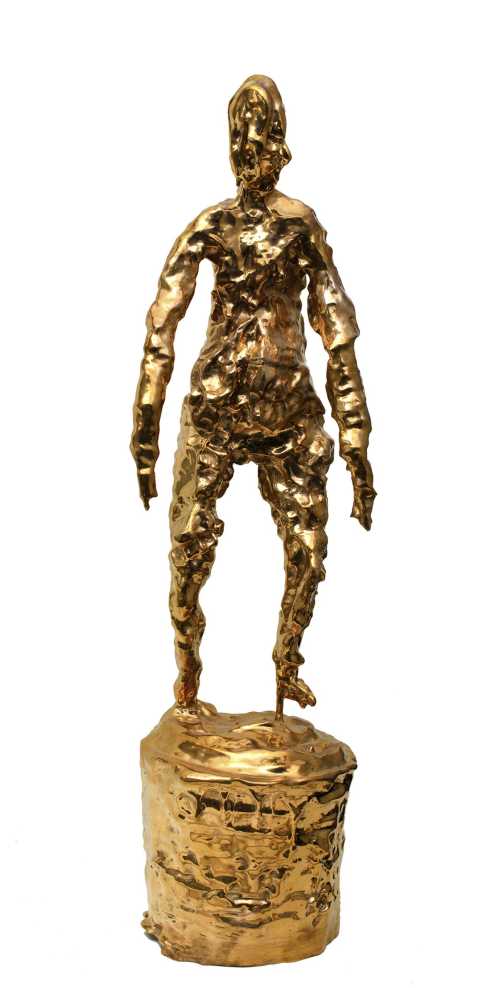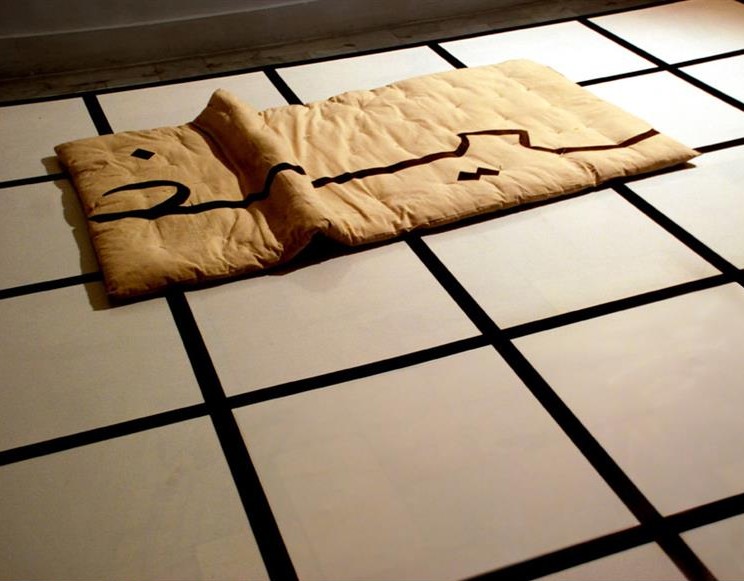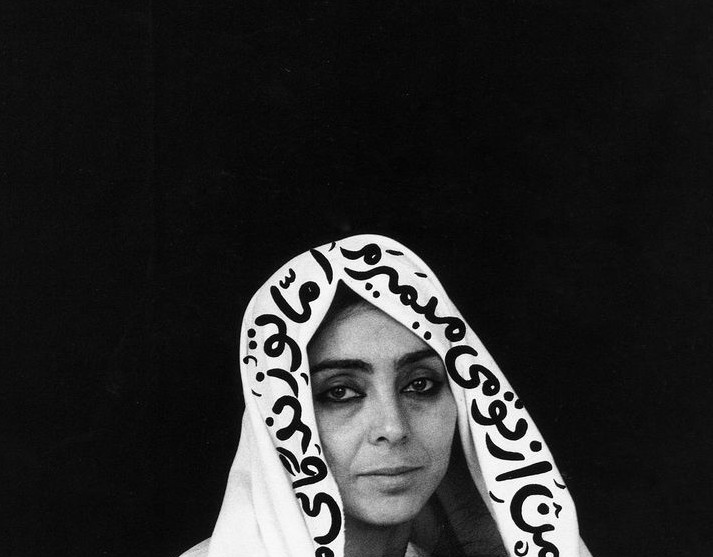About Bita Fayyazi
Bita Fayyazi, potter, sculptor, and contemporary installer, was born in Tehran. she is one of the pioneers of installation art in the years after the revolution. Fayyazi studied and lived in England between 1975 and 1982. After returning to Iran, she learned the methods of pottery and ceramic making in the Cultural Heritage Organization and porcelain factory workshops, and from 1990 to 1997, she was engaged in making pottery and embossed tiles. Fayyazi participated in the Biennale of Pottery and finally won the special prize at the 6th Biennale of Contemporary Ceramic Art in Tehran in 1998. In these years, Fayyazi also turned to sculpt with mud and plaster.
With the works she created in the 90s, Fayyazi challenged the official definitions of art at that time. He was interested in interdisciplinary methods and the presentation of artworks in public arenas. Her artworks, from the way of production to the form of presentation, were not compatible with the museum's view of art and limited it to conventional formats. The "Death of Animals on the Road" installation was her first significant step in this direction; In this performance, which is also known as "dead dogs," 200 bodies were made in the shape of crushed dog carcasses and arranged on the side of Tehran's highways, which was a reminder of the road deaths of animals.
A year after that, in a group exhibition called "Experience 77", an installation using 200 clay figures of crows and empty fruit boxes and playing with the shadow of the figures on the walls was performed in a workshop. In 1999, in another group exhibition titled "Blue Children, Black Sky," with white plaster statues of children playing in a room full of dark images, she addressed the issue of air pollution in Tehran. Maziar Bahari, Khosro Hassanzadeh, and Sadegh Tirafkan were her collaborators in this project. Mass reproduction of more or less identical figures in the environment is a method that Fayyazi often uses to express her ideas; This multiplication of volumes creates the desired spatial effect. She repeated the same central statement in her subsequent work periods in international art centers with wider dimensions. For example, in 2001, she made 2,000 terracotta figures of insects and exhibited the result in the group exhibition "Iranian Contemporary Art" at the Barbican Center in London. In 2014, she participated in the 51st Venice Biennale with an installation called "Ghesmat"; A cloud of bronze sculptures of babies was presented at the event.
She also has the experience of a performance in her portfolio: a 20-minute walk with a dress decorated with souvenir photos and symbolic arrays and an iron cane in front of the National Museum of Yerevan, Armenia.
A year after that, in a group exhibition called "Experience 77", an installation using 200 clay figures of crows and empty fruit boxes and playing with the shadow of the figures on the walls was performed in a workshop. In 1999, in another group exhibition titled "Blue Children, Black Sky," with white plaster statues of children playing in a room full of dark images, she addressed the issue of air pollution in Tehran. Maziar Bahari, Khosro Hassanzadeh, and Sadegh Tirafkan were her collaborators in this project. Mass reproduction of more or less identical figures in the environment is a method that Fayyazi often uses to express her ideas; This multiplication of volumes creates the desired spatial effect. She repeated the same central statement in her subsequent work periods in international art centers with wider dimensions. For example, in 2001, she made 2,000 terracotta figures of insects and exhibited the result in the group exhibition "Iranian Contemporary Art" at the Barbican Center in London. In 2014, she participated in the 51st Venice Biennale with an installation called "Ghesmat"; A cloud of bronze sculptures of babies was presented at the event.
She also has the experience of a performance in her portfolio: a 20-minute walk with a dress decorated with souvenir photos and symbolic arrays and an iron cane in front of the National Museum of Yerevan, Armenia.
The Most Expensive Artwork
At Auctions
First Attendance
30 April 2008
# Attendance
14
# Artworks
15
Average Realized Price
13,994 USD
Average Min Estimate
10,693 USD
Average Max Estimate
14,967 USD
Sell-through Rate
66.667%
Average Growth of Artwork Worth
42.569%
Timeline
Soft Edge of the Blade Vol. 3 exhibition
10 November
The Third Dimension According to Women's Reports exhibition
25 July
Shifting Gazes: Women Through Middle Eastern Eyes exhibition
15 April
Art Basel Hong Kong 2025 art fair
28 March
For Nowrouz a Selection by Fereydoun Ave exhibition
22 March
Artist’s Emergency Aid Part V exhibition
14 March
Dreaming With Eyes Wide Open exhibition
6 December
Narrative and Material exhibition
8 November
Online MIDDLE-EAST: Contemporary Arab, Iranian & Turkish Art auction
17 October
The 21st Tehran - Contemporary Iranian Art auction
11 October
Crooky exhibition
4 October
Darrous, 34 exhibition
2 August
Khosrownameh exhibition
12 July
10s of Artworks, 10s of Millions exhibition
8 March
Beyond Two Dimensions exhibition
2 February
Crescendo exhibition
26 January
Gozar Project exhibition
19 January
A Selection of 70 Years of Iranian Sculpture exhibition
4 August
Prospect II exhibition
30 June
The Land of Cypress Trees: Connective Strings of Resilience exhibition
27 February
The Contemporary Collector exhibition
2 September
Tehran- 16th- Iranian contemporary art auction
1 July
Spring Frame exhibition
13 May
Vanishing Point exhibition
6 May
Soft Edge of the Blade exhibition
10 February
Exhibition of 30 Sculptures by 30 Artists exhibition
24 December
now... exhibition
10 September
The 14th Tehran- Contemporary Iranian Art auction
12 August
The 13th Tehran- Modern and Contemporary Iranian Art auction
15 January
The Dinosaur Lost Her Bearings exhibition
18 December
Art moderne & art contemporain • Arts décoratifs & design auction
28 November
One by One exhibition
3 July
This Too Shall Pass auction
25 June
Shabtab 7 exhibition
14 February
Collector Circle exhibition
11 February
دوازدهمین دوره حراج تهران auction
17 January
Annual Review exhibition
19 July
Forty - Fifty - Sixty exhibition
21 June
Collector Circle, 2019 exhibition
4 January
black and white exhibition
20 April
I Love You Because You're Sweet and Tender exhibition
15 December
Sculpture Exhibition exhibition
11 March
Alchemy: Objects of Desire auction
21 April
Vaudeville exhibition
25 December
Islamic and Indian Art auction
9 June
Rearranged exhibition
16 September
Modern and Contemporary Arab,Iranian and Turkish Art Part II auction
30 October
Trunkated: 2Nd Episode exhibition
11 October
A Bita Fayyazi Installation exhibition
24 February
Obscure Stream of Life, But I'm Still Having My Afternoon Cuppa exhibition
25 October
Contemporary Art / Arab & Iranian auction
4 October
International Modern and Contemporary Art auction
26 October
International Modern and Contemporary Art auction
30 April
Articles
Iranian Art of the 1990s and 2000s: Trends, Movements, and Market (Part One) 17 July 2024
The 2000s and 2010s are considered pivotal decades in the landscape of Iranian art. During this period, new artistic approaches were introduced into the Iranian visual arts scene by both the public and private sectors. The art market also began to take an interest in Middle Eastern art, organizing the first auctions dedicated to these works. In the early auctions specifically focuse...
Female Art Players in Iran's and Middle East's Art Scene 23 May 2023
Women have always played an important role in the development of Middle Eastern culture and art, while there are few references to their activities in art history books. Recently, there have been many efforts to recognize female artists and their influences, but the women who have been involved in the presentation of art, are still lesser-known actors in the region's art world. This...


